Japanese Knotweed Removal Cost
Last updated 4th June, 2025
Want to know the Japanese knotweed removal cost?
This article discusses Japanese knotweed removal. Whilst this highly invasive plant may be difficult to get rid of, we try and make it as simple as we can for you to understand Japanese knotweed treatment and how much this will cost
Let's get started below!
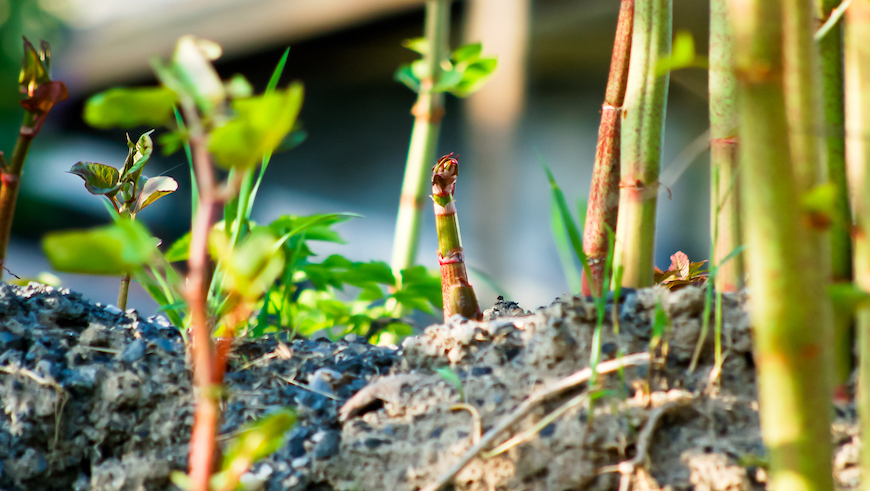
Table of Contents
- How much to remove Japanese knotweed?
- Labour costs and time frames
- Factors that impact Japanese knotweed treatment costs
- What does removing Japanese knotweed involve?
- DIY Japanese knotweed removal
- Building regulations and planning permission for Japanese knotweed removal
- FAQs
- How to find & hire a Japanese knotweed removal specialist
- Sources
How Much to Remove Japanese Knotweed?
The average cost of removing a 20m² domestic area of knotweed infestation is £400 to £2100, while to remove a 20m² to 50m² area would cost approximately £1800 to £3300. As for a 50m² to 100m² area, expect to pay around £3200 to £5200 altogether.
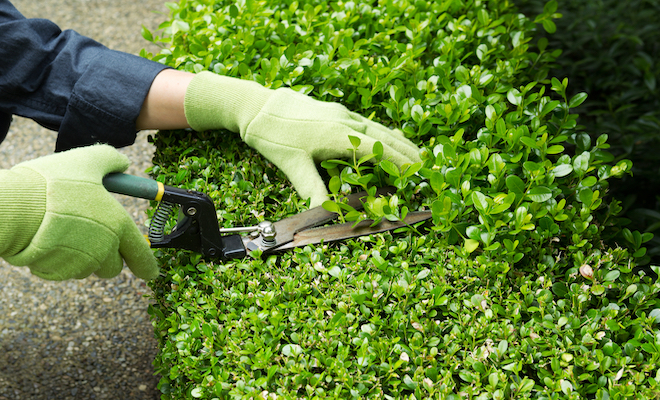
Japanese Knotweed Treatment Prices
The cost to remove japanese knotweed largely depends on the size of the area. Below is an average cost summary, although for private areas larger than 100m² it is best to ask for a quote in advance, as prices can vary.
| Size of Area | Cost |
|---|---|
| 20m² or less | £400 to £2100 |
| 20-50m² | £1800 to £3300 |
| 50-100m² | £3200 to £5200 |
Commercial Japanese Knotweed Removal Costs
In the event of a Japanese Knotweed infestation on commercial premises, there are a number of methods that can be used to remove the issue as part of a larger scale operation. The cost of which are outlined below:
Herbicide Treatment (5-Year Time Frame)
- Less than 50m²: £1,000 – £3,200
- 50m² to 100m²: £3,000 – £5,500
- 100m² to 500m²: £4,000 – £7,000
- 500m² to 1,000m²: £5,000 – £10,000+
Reducing Dig & Root Barriers (with Herbicide)
- Less than 50m²: £2,000 – £5,500
- 50m² to 100m²: £5,000 – £12,000
- 100m² to 500m²: £20,000 – £40,000
- 500m² to 1,000m²: £40,000+
Onsite Relocation & Herbicide
- Less than 50m²: £5,000 – £12,000
- 50m² to 100m²: £10,000 – £20,000
- 100m² to 500m²: £15,000 – £30,000
- 500m² to 1,000m²: £20,000 – £30,000
Onsite Burial
- Less than 50m²: £5,000 – £15,000
- 50m² to 100m²: £10,000 – £20,000
- 100m² to 500m²: £20,000 – £35,000
- 500m² to 1,000m²: £30,000 – £80,000
Total Excavation & Disposal (Dig and Dump)
- Less than 50m²: £5,000 – £20,000
- 50m² to 100m²: £15,000 – £40,000
- 100m² to 500m²: £40,000 – £120,000
- 500m² to 1,000m²: £100,000 – £200,000
Pick and Sort / Screening
- Same costs as 'Reducing Dig & Root Barriers'
Please note these are estimated figures which may vary locally depending on whereabouts you're located within the country.
Japanese Knotweed Cost Breakdown Calculator
Individual costs for removing Japanese knotweed by dig and dump for a 50-100m2 area: £27,400
Materials
£26,000
Tradesmen
£1100
Waste Removal
£300
Additional Japanese Knotweed Removal Costs
There are plenty of extra jobs you may want to fit in after the Japanese knotweed removal has been completed or treated. Let’s take a look at some popular examples.
Garden Maintenance
There are various forms of garden maintenance that may need doing, such as hedge and bush trimming/pruning, weed removal, leaf blowing, grass cutting, lawn feeding, watering, as well as driveway and patio cleaning.
It costs about £10 to £50 an hour to hire a gardener for said work. The actual price is going to depend on the size of the area as generally speaking the larger the area, the more it will cost.
Here’s an example of some prices:
- 6x4 metres - £50 to £300
- 8x6 metres - £50 to £400
- 12x8 metres - £100 to £800
Garden Fencing
Fencing is a great way to enhance the look and feel of a garden, especially if you bland structures currently in place.
Here are some average costs of fencing:
- Lap fence panels - £400 to £600
- Slatted fence panels - £500 to £700
- Decorative panels - £700 to £1000
- Tongue and groove panels - £800 to £1200
As for some alternative fencing types:
- Wire - £1 to £5
- Electric - £3 to £10
- Picket - £5 to £10
- Vinyl - £15 to £30
- Aluminium - £20 to £30
- Steel - £20 to £40
Tree Stump Removal
As well as combatting Japanese Knotweed, you may come across other difficult items to have removed from your garden such as felling an unwanted tree.
In order to remove just the tree stump of a tree that's already no longer standing, as well as its network of roots, the cost will be around £150-£350 and is usually charged as a days work.
Laying Garden Turf
If you're starting to take care of your whole garden, then how about laying new turf so your grass can spring back to life too?
The average cost of laying new turf on average ranges between £155 and £850, depending on the size of the garden. Price can vary depending on the quality of turf you choose.
Labour Costs and Time Frames
Let’s now discuss the labour costs specifically and how long it takes for tradespeople to undertake this work.
It costs around £20 to £50 an hour to remove Japanese knotweed. So if you were looking to have it removed from an average sized domestic property, you could expect the cost to end up somewhere between £200 and £500
.As for labour-only costs for other areas, see below for a rough guide, although costs may vary depending where you are located (for example London overheads may increase the price quoted):
| Size of Area | Labour Cost |
|---|---|
| 50m² or less | £100 to £250 |
| 50-100m² | £200 to £500 |
| 100-500m² | £300 to £700 |
| 500-1000m² | £400 to £1000 |
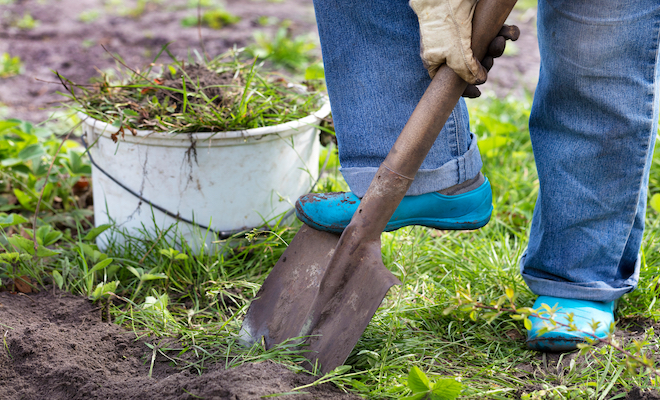
But how long would the work take?
On average, this is the work duration of removing Japanese knotweed:
- Onsite relocation + herbicide - 1-2 days
- Herbicide treatment over the course of 5 years - several years
- Pick and sort/screenings - 1-2 days
- Reduce dig and root barriers using herbicide treatments - 1-2 days
- Onsite burial - 1-2 days
- Total excavation and disposal (i.e. dig and dump)
The following factors may influence the labour cost and time frame:
- Size/type of Japanese knotweed
- Ease of access
- State of the work area
Factors That Impact Japanese Knotweed Treatment Costs
As with any trades work, there are a variety of factors that could shape the price of having Japanese knotweed removed. We’ve mentioned some of these factors already but let’s now look at them in more detail.
Type/Size of Knotweed
When it comes to the size and type of Japanese knotweed, this is relevant as some forms of this knotweed are more challenging to remove than others (and could involve higher supply costs). The difficulty of removal and the size of the area being relevant due to the time frame involved is a cost factor because the longer the work takes, the higher the labour costs tend to be.
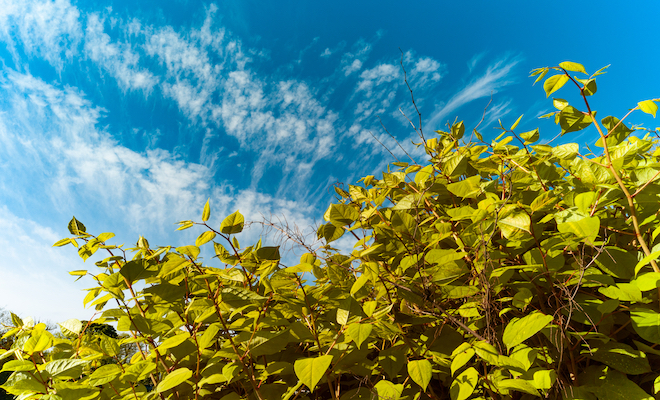
Removal Area
Ease of access and the state of the work area are important since these factors influence the time the work will take and potentially the supply costs. Once again, the longer the work lasts, the higher the labour prices (generally).
Property Location
Where you live should also be considered when budgeting for Japanese knotweed removal.
In essence, each region of the UK has varying trade costs (since the living costs of said trades people differ depending on the place). Labour prices are usually highest in the southeast (London being one of the dearest spots), while they tend to be lower than the nationwide average in locations such as the north of England, Scotland, and Northern Ireland.
What Does Removing Japanese Knotweed Involve?
The exact process of ridding a property of Japanese knotweed will differ significantly depending on the method employed. We’ll focus on a given popular chemical-based approach in this section.
1. Hiring a Professional
First and foremost, you’ll want to find a suitable contractor/company for the job. It’s worth getting three or more quotes from potential candidates for the job before making a decision. This will help increase your chances of securing good value for money. Also it’s worth asking for references from an individual or company before hiring a professional.
2. Japanese Knotweed Identification
Before the contractor can get to work, they’ll need to spot the Japanese knotweed plants and verify where it is and isn’t found throughout the property.
3. Remove the Canes and Apply Weed Killer
Next up, the professional will rid the canes by cutting them off as close to the ground as can be achieved before removing the cut pieces from the property. Then, in this given method, they would spray a glyphosate-based weed killer straight after they’ve cut the canes down. It’s important that the weed killer is ONLY applied to the Japanese knotweed as any other vegetation it touches would be killed in the process.
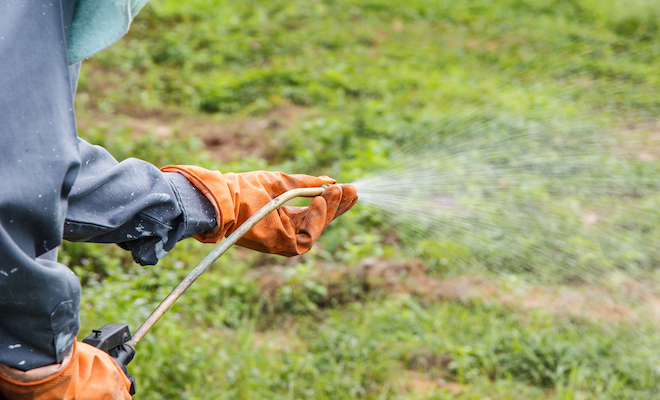
4. Completing the Process
Ideally, the contractor/company should give it seven days before pulling up the weeds. This would allow the herbicide sufficient time to get to the root of the knotweed. Then the dead knotweed can be removed. It’s important that the entire root is removed.
Following this, you should mow the plants on a weekly basis to ensure that the Japanese knotweed does not return. It’s important that you avoid touching the knotweed, however. If you do so by accident you should wash your hands with soap.
Applying the glyphosate once is unlikely to be enough, however. For that reason, a professional should apply this weed killer about twice annually. It’s ideal for this to be applied about the time when the knotweed would thrive the most.
It is possible that after all this effort, the issue will remain. In this case, you’d need to have a professional take another more stringent approach. Obviously it’s essential that you weigh up options first when it comes to the approach taken to remove the Japanese knotweed, although a hired professional will likely decide on this and know what approach is best.
DIY Japanese Knotweed Removal
It is possible to remove Japanese knotweed flowers DIY but it is generally best to hire a specialist, given that this is complex work and requires a meticulous approach.
However, if you’d rather do it yourself, then you should still seek a professional’s advice and ensure you obtain any required approvals when it comes to building regulations and planning permission.
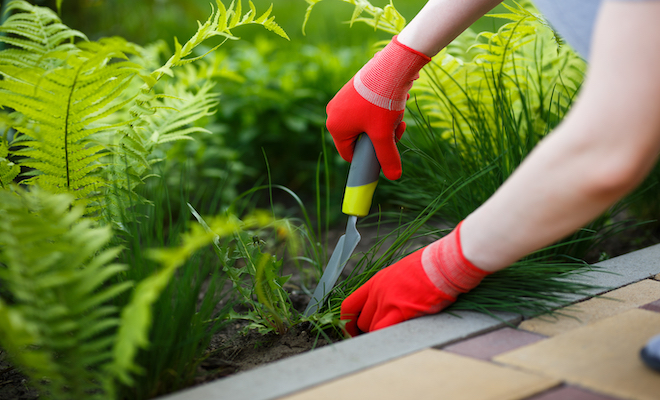
Of course, if you’re going to remove Japanese knotweed, it’s essential that you’re sure you know precisely what is involved.
The following tools/equipment may be needed depending on the method:
- Garden spade/shovel
- Lawn mower
- Spray bottle
- Pliers
- Handheld garden sprayer
As for the materials required, they may be:
- Binliner
- Glyphosate-based herbicides
- Water
The following safety clothes/equipment should be used:
- Protective eyewear
- Protective shoes
- Rubber gloves
As with any DIY work, there are some risks involved. Make sure to avoid touching the knotweed as best as possible. Either way, you should wash your hands thoroughly afterward with soap and make sure you haven’t brought any into the house with you. Also the use of sharp/heavy equipment and tools represent further hazards.
Building Regulations and Planning Permission for Japanese Knotweed Removal
Want to know what rules might apply for removing Japanese knotweed?
Building regulations and planning permission are unlikely to apply unless you intend to perform some structural changes to the location. If in doubt, you should contact your local council for verification.
Building regulations approval costs around £100, while this plus a relevant inspection would total about £300 to £500. As for planning permission approval, this is priced at around £200 to £300, although it will really depend on the nature/specifics of the job among other factors.
How to Find & Hire a Japanese Knotweed Removal Specialist
It is usually best practice to hire a specialist to remove Japanese knotweed as per the reasons mentioned earlier. To rehash, a Japanese knotweed removal specialist is likely to charge around £20 to £50 per hour, although it will depend on factors such as your location.
You should consider the following when hiring a Japanese knotweed removal specialist:
- Do they have qualifications?
- What is their experience? (ask for references)
- How about accreditation?
- And insurance?
While qualifications/certifications are not needed to remove Japanese knotweed, a contractor may have training in the area such as through a PCA course.
FAQs
Sources
https://www.inciner8.com/blog/invasive-plants/how-to-get-rid-of-japanese-knotweed/
https://www.gov.uk/guidance/prevent-japanese-knotweed-from-spreading










